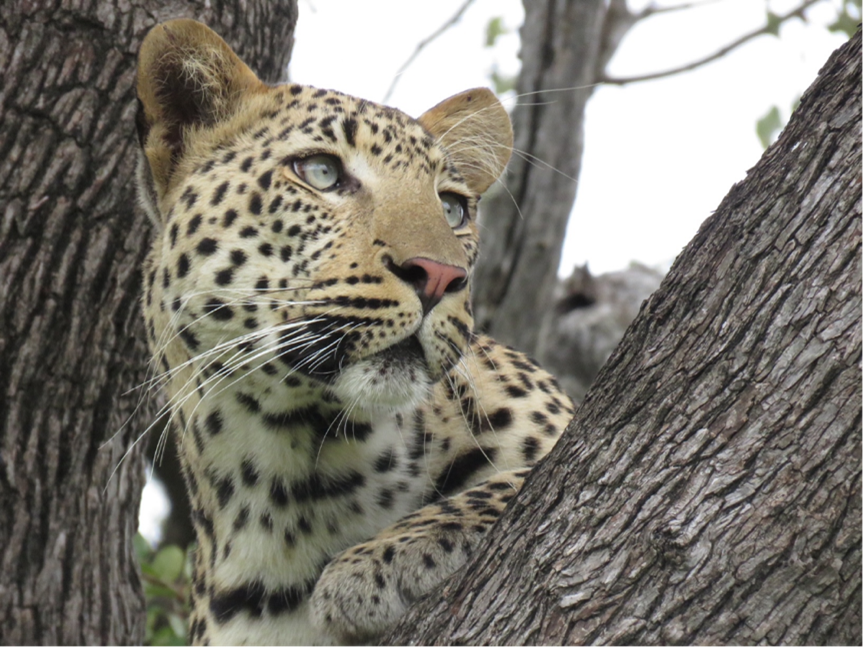March 2023
Singita Kruger National Park: March 2023
Share:
Singita Kruger National Park: March 2023
The transition from the summer into our dryer months has begun. The verdant colour palette of the concession is slowly giving way to the more neutral colours of our winter months. The last week has seen us experience much cooler temperatures as the days have shortened, announcing the end of summer. The barn swallows are starting to gather, and most of the colourful migrants have left us again for their long journey towards the northern summer regions. The movement of animals is still governed by the vast amount of standing water that was brought on by the tropical cyclones from last month, the herds of grazers can be found spread from north to south of the property. The lions continue to cover large distances following the herds of prey animals.
However, this month will long be remembered for the death of “Xihamham” the old Shishangaan male lion.
Here’s a Sightings Snapshot for March:
Lions
The Shishangaan male lions have been noticeably venturing far south on a few occasions. It is unclear if they have been responding to the Trichard males moving north or if they have been searching for the highly mobile larger portion of the Mananga Pride.
The Trichard males have been very confident this month, the latter part of the month has seen them push northwards into uncharted territory for the brothers. Most evenings and mornings they have been heard vocalising.
On the 30th of this month, early in the morning, tracks were found of a number of lions. The tracks indicated a skirmish between the individuals. The tracks led to the Trichardt male lions north of the Gudzane stream, deep in the Shishangaan male lions’ territory. At first, they were thought to be alone however, an injured male lion came out behind a bush. The Trichardt males circled this lion who was then noticed to be the older Shishangaan male known as “Xihamham”, he was then attacked and mortally injured. This is certainly an end of an era.
The Mananga Pride has continued to be split most of the time into what we have been referring to as two groups, the larger and the smaller portions. The larger portion has been moving large distances and seems to be focusing its efforts on larger prey, especially the large buffalo herds that often cross north into the wilderness areas over our northern boundary road. The smaller portion which consists of two females and six younger members that were born at the end of 2021, is usually around the Gudzane area. The entire pride as well as the two magnificent Shishangaan males were all found feeding on a wildebeest during the first week of the month. It is unclear what the future holds for this pride with the demise of the Shishangaan coalition that has sired all of their cubs.
The Shishangaan Pride has revealed five new members this month. They have not been seen on too many occasions and seem to be keeping the cubs not too far from the lodges. Towards the last days of the month, the two mothers and the cubs were seen feeding on an impala. The other members of the pride have been seen fairly regularly. They all seem to be doing their best to avoid the Trichard males.
The Mountain Pride was found deep in the concession close to Mozambique, feeding on a zebra. This is the first sighting of this historical pride in many months. The eight members were in great condition.
The Maputo male was seen in the north of the concession and has settled into his nomadic lifestyle. He showed signs of a fight with other males but was generally healthy.
Leopards
The Dumbana female leopard was seen on a handful of occasions during March. As communicated last month, we suspected that she had given birth to a new litter of cubs. We can now confirm that this is in fact the case as she was seen with suckle marks on her belly. We have not seen her cub/s as of yet but she has been viewed going to and coming from the ridge line just north of Green Apple Hill so this is likely where the den is. Hopefully next month we can confirm that they have been found and the number of little ones.
Nhlanguleni female was only seen on two occasions - once with both of her female cubs and once by herself. We also had a sighting of one of the cubs but with Nhlanguleni and the other cub not present. The three are still spending most of their time on the ridge line between Central and Ma-4-Pounds/Ntoma area. The Nhlanguleni female is still doing a great job and both cubs are still looking in good condition.
Just like last month, a number of unknown leopards, both male and female, were seen. A female and cub have been seen on Park Road between the Mbeki Drainage and N’wanetsi Crossing, another female with suckle marks near the Gudzane Dam area, as well as a female viewed on a few occasions near the Stickythorn Quarry area. An unidentified male was seen in the south eastern parts of the concession early in the month.
The Pelejambo male was found feeding on an impala ram carcass at Stickythorn Quarry in the middle of the month and then again on the 28th vocalising and marking territory in the central depression. We find his tracks more often than we view him though, but hopefully this will change going forward.
The Dumbana males continue to provide us with fantastic leopard viewing and have provided the bulk of our leopard sightings once again this month. The 1:1 Dumbana male is still spending the majority of his time in the central regions. We also viewed him and his mother, the Dumbana female, together in two separate sightings. They both kept their distance and there was no animosity towards each other. The 3:3 Dumbana male, is now spending most of his time west of his brother in the stickythorn thickets. They are spending more and more time apart as they prepare for their nomadic lifestyle that lies ahead. However, they are still seen together sporadically, once feeding on an impala ewe carcass. With three large males - the Lebombo, Monzo and Pelajumbo - as well as their mother, in the immediate vicinity, it is anyone’s guess for how much longer both males will remain in the area. Until that time comes, we will continue to enjoy both males presence in this amazing concession.
The Lebombo male was seen on four occasions. He is mostly seen between Dave’s Crossing and the lodges along the N’wanetsi River and Park Road (S41) to the west.
The Monzo male provided great viewing for the month, having been seen on ten separate occasions, twice with impala kills. Just like the Lebombo male, he is often seen between Xingwenyana Crossing and the lodges to the south and Park Road (S41) to the west. Both the Monzo and Lebombo males were seen mating with the Dumbana female in October and one is more than likely the father of the cub/s.
The Mbiri Mbiri male was seen on three separate occasions with the last sighting on the 28th. He was found with an impala ram carcass in the north eastern parts of the concession which was placed in a tree. Mbiri Mbiri has shifted his territory more north in the last couple of months due to the presence of the Pelajumbo male in the Central/Stickythorn areas.

Wild dogs
It has been a very quiet month for wild dogs. The small pack of three was seen only once and there were no other sightings of the other packs that have been viewed over the last few months. We did however have two sightings of two males at the beginning of the month. Hopefully both males can meet up with a nomadic female/s and breed. Packs generally include several related males, and one or more related females originating from a different pack. Wild dogs can cover huge distances in a very short amount of time, therefore it is normal to have sporadic sightings. One of the few truly nomadic carnivores, pack home ranges can vary from 150 to 2 000 km2. This is also the time of the year when wild dogs begin to breed and pack ranges contract considerably when there are small pups at the den requiring regular feeding.
Spotted hyenas
Sightings of all three known clans continued to be good during the month. Most sightings were of the clan holding territory around the lodges, with the area from Border Fourways to N’wanetsi Big Bend being particularly productive.
A deceased adult was found on the morning of the 31st on Ntsibitsane, just north of Monzo Fourways. Being territorial, and with each clan defending their territory vigorously, this could have potentially been a territorial dispute. However, as we were not there to witness what took place, we can only surmise.
Elephants
The majority of these sightings were of breeding herds that have now made their return to the open basalt plains after being in the southern sections of the Kruger National Park where they have been feeding on marula fruit. The majority of the herds are now feeding on grass and creepers, and the waters of the Nwanetsi River and Gudzane Dam is sustaining them.
Cheetah
There were no cheetah sightings on the concession for the month of March. There were reports of cheetah on the H6 and the area surrounding the staff village. We are confident that conditions will improve during the next month and we will enjoy seeing them again.
Buffalos
Multiple buffalo sightings of different numbers and social structures have been recorded during March. Various lone “dagga boys” have been seen throughout the concession as well as bachelor groups and small to large breeding herds, culminating with a herd of +/- 1 000 at the end of the month at Cassia Open Area.
A leucistic calf within a herd of +/- 300 was seen on the 12th around the Xinkelengane/Nyelethi area.
Plains game
As per usual the general game species have been abundant and all of the species are in excellent condition after the above-average rainfall over the summer. Giraffes and zebras are found all over the concession.
Birds
Most of the migrant bird species are still present but their departure is imminent. Large flocks of barn swallows are beginning to gather in trees prior to migration and it is just a matter time before the daily calls of woodlands kingfishers, European bee-eaters and Jacobin cuckoos, amongst others migrants, cease.
A number of species are still sporting their full breeding plumage – a male southern red bishop has set up home at Mbeki’s Crossing, indigobirds are in abundance, southern masked-weaver colonies are in full swing and multiple long-tailed paradise whydahs can be seen flying overhead with their bulky long tail feathers. However, the males will transform back into their inconspicuous eclipse plumage within the next couple of weeks, blending in better with their surrounding environment.
A large colony of red-billed quelea are nesting in the Stickythorn thickets. Multiple groups can be seen foraging throughout the concession, before returning to their nests as the sun sets. The noise from the 1 000’s of individuals can be heard from quite a distance away.
Two confirmed nesting sights of southern ground hornbills have been found – one on the N’wanetsi River east of Dave’s Crossing and the other at Fig Tree Link, with both sites in sycamore fig trees.
A number of corn crakes have been seen in the multiple ephemeral pans that have developed in the grasslands as a result of the abundance of water from the heavy rains in February.
A Little Grebe was seen at the weir and a Black Stork was seen near Golf Course Clearing.


By Jenny Hishin
Author / Field Guide